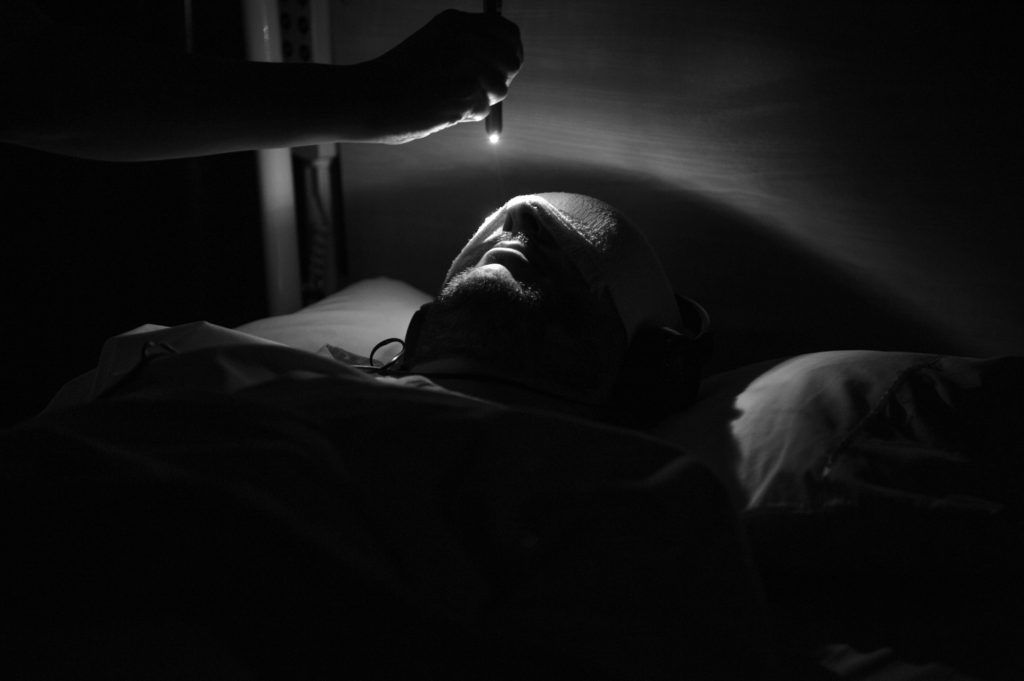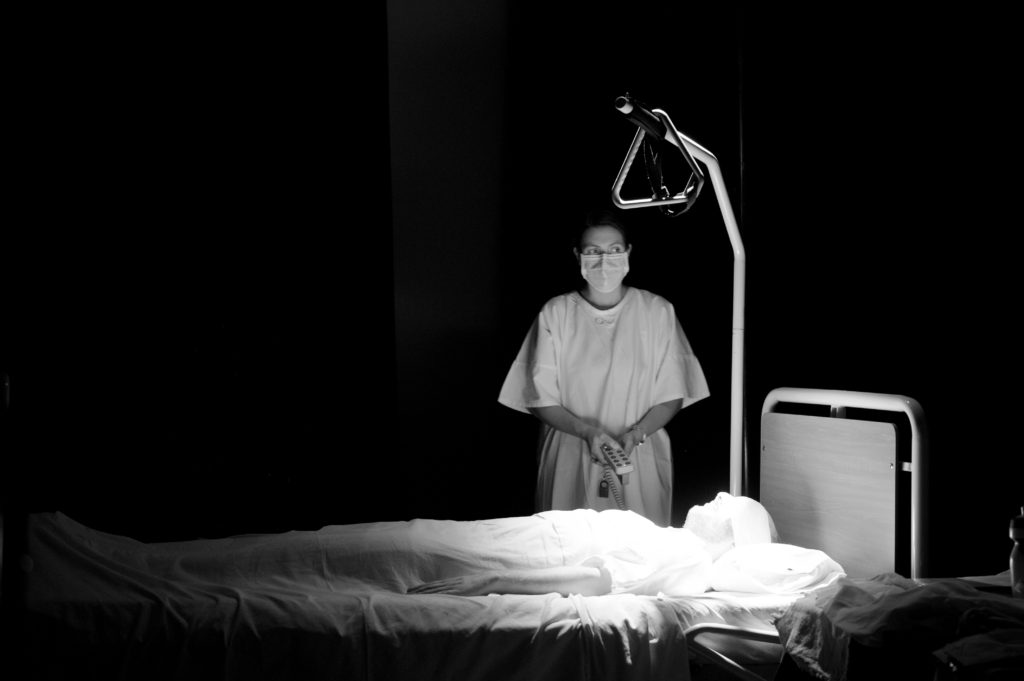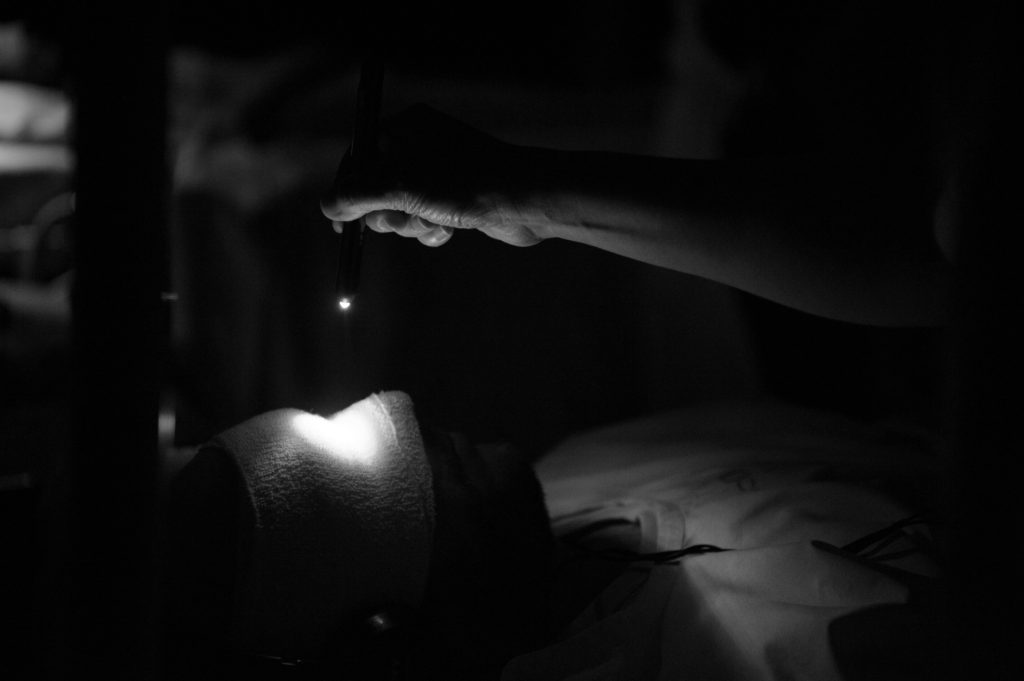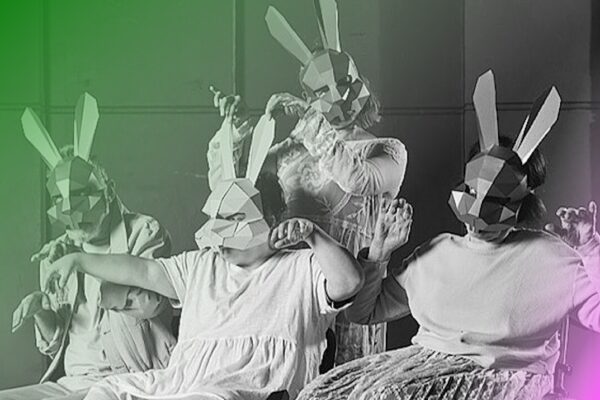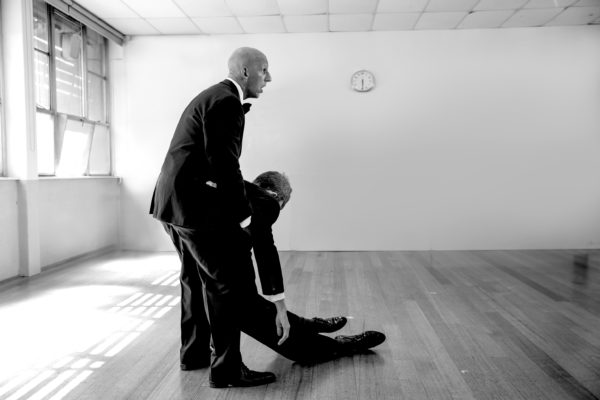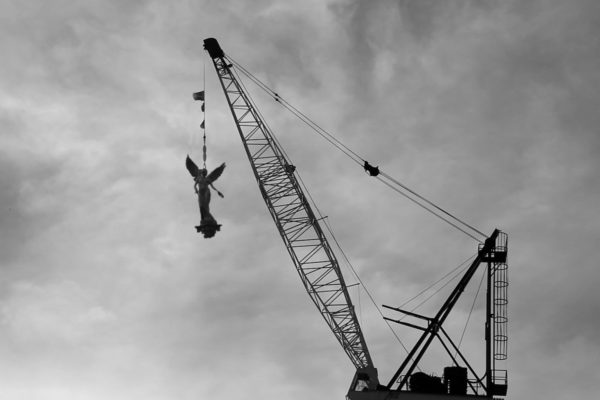THE INFIRMARY
Enter a richly poetic experience, submit to the caring hands of others and contemplate your mortality. Set in a hospital ward, The Infirmary invites you to give yourself over to a uniquely sensorial encounter that considers life and death as science and mystery. Can we ever be ready to die? How do we imagine our final hours? What might we feel or think at the threshold between life and death? Is there some value in practising for death? The Melbourne Critique spoke with Katerina Kokkinos-Kennedy, Artistic Director of Triage about this unsettling performance, and the illusive nature of life and death.
How have you gone about creating a work, which claims to be a uniquely sensorial encounter?
Does society more broadly need to engage further in contemplation and conversation surrounding death and passing, where does art exist within this area?
Western society tends to banish illness and death from sight – and therefore, human vulnerability. By approaching the outer limits of life (the moment when we are bed-bound and cared for by others) the work functions as a memento mori, Latin for ‘remember that you [have to] die’. Art has always had a unique role to play in terms of staging the impossible, the untenable or the unimaginable. Theatre – as plays and more recently as live art and immersive practice – is also founded on this interest. Immersive works aim to bring audiences closer to tangible bodily and affective experiences that remain abstract for many of us (war, conflict, death, loss, et al.). Society has, in the last decade, turned its attention towards death: practices such as pre-death funeral celebrations, a rekindled interest in traditional wakes, and special burial rites all signal the need to think and talk about these key aspects of human life in much more detail. It’s like we’re finally happy to address the end. We all feel comfortable with births, and marriages – but death has been a big downer. But what if it’s actually another stage? The end or not the end, depending on your beliefs and experiences? This attention also suggests maturation and the capacity to deal with the full spectrum of life.
How do you imagine your final hours, and if you were to die tomorrow, has your life left you feeling fulfilled?
The idea of leaving this world – which is bright and beautiful as well as being ‘full of terrors’ is something to consider. The Tibetan Buddhists exhort one another to think about death seven times a day – something that is a helpful reminder of being here and not being here. In a funny way, I was lucky enough to be close to death in my 30s. This experience, whilst being traumatic and painful – was also life changing. it gave me a lot. It made me braver, less afraid. I got to practice the end, and was fortunate to live beyond it. I think these experiences are transforming – and if you’ve had this kind of an experience – there’s a strong urge to share the insights that came with it. What are they? Live your life to the fullest. Don’t allow fear to stop you doing what you want to do. Love the people close to you. Be grateful. And let go of things and people that don’t serve you. Life is an immense gift.
How do wish this work, to affect audiences. is it in emotion or in sensibilities?
The work is designed to put audiences at ease and to place them at the centre of the performance event. This means that we look after them, provide ideas for their minds and experiences for their bodies. In my work the audience is almost always the protagonist, the centre of the drama – rather than the witness. This is a key element of immersive performance and one that enables audiences to traverse a wide range of thoughts, feelings, and bodily sensations as they grapple with their circumstances and the artistic materials we provide. There is no ‘wish’ for the audience – as each person is unique – but what is essential is that they feel invited into the event, and are free to roam within it (in terms of their thoughts and emotions). They may leave having had an encounter which points them back to the rough magic of art as a means to mirroring the largess of life. But there are no guarantees or shoulds.
What if art died, and we kept going, is this a concept able to be grasped?
Art can never die. We are art machines. Humans are hard wired and soft wired to make stuff. All kinds of stuff. This is the fascinating thing about us – we are story-makers and story-tellers.

